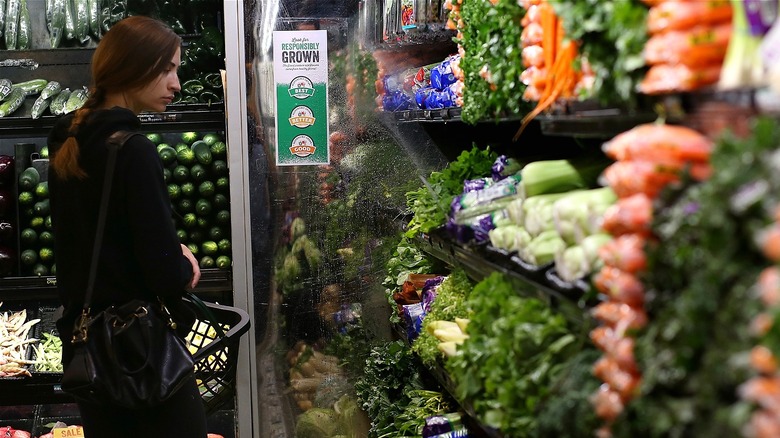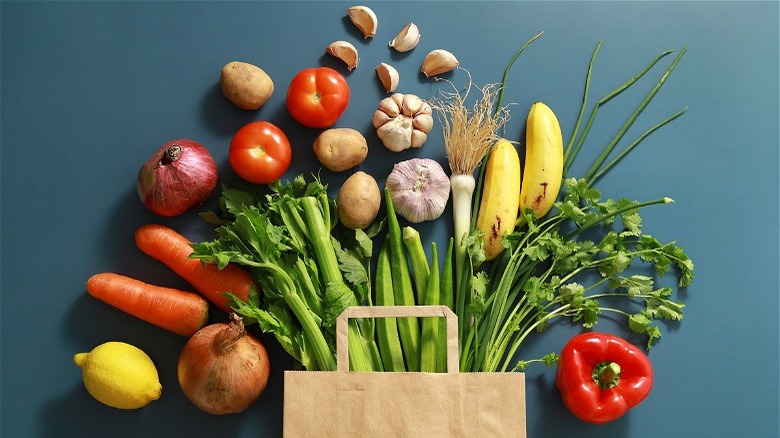What To Do With Your Veggie Tops, According To Whole Foods
Let's face it: For those of us who long for the niceties of life, including expensive snacks and organic produce, we're still making pit stops at Whole Foods despite the ever-growing inflation rate in the U.S. While there are opinions from a cost standpoint on what you should and shouldn't buy at Whole Foods, produce is almost always a safe bet for the upscale grocer.
In 2014 Whole Foods rolled out a ranking system for fruits and vegetables that includes water and energy use scores along with proper labeling to indicate when a food is "responsibly grown" as a way to avoid harmful pesticides (via CBS). The popular chain of health-minded food stores has proven its dedication to environmental advocacy in many ways, like becoming more energy efficient and reducing single-use plastics (per the company's website).
Speaking of being an environmental steward, apart from turning your potato peels into chips, or pickling watermelon rinds, Whole Foods has a useful recommendation for your next round of pesky vegetable tops, and surprisingly, the tip doesn't include your compost bin.
How Whole Foods handles whole vegetables
While the average Whole Foods customer is less than 30 and makes over $80,000 a year, that doesn't mean the customer cares less about making that paycheck stretch. While you may be wondering how affordable Whole Foods truly is in 2022, according to The Wall Street Journal, the company is working hard to ensure comparable prices in a competitive market for the foreseeable future.
Apart from pricing, the brand's typical customer is committed to the betterment of the environment — so what better way to prove that loyalty than by reducing food waste? Recently, in an article titled "6 Ways to Get the Most Out of Your Food Scraps," Whole Foods suggests using vegetable tops to make a simple pesto. You can follow your favorite pesto recipe and instead of basil, just throw in the tops of those root vegetables such as beets and carrots as a replacement.
Not only that, but Whole Foods recommends making a hearty stock by combining all your veggie ends into one simmering pot of salty water and reducing the liquid until golden (via Whole Foods Market). Whether the motivation behind using all of your vegetables is to make your dollar stretch or to save the planet, you might consider giving these food-saving options a try and judging for yourself whether the taste lives up to the message.

